Looking for the perfect fabric for your pleated shades? Pleated shades typically come in a wide array of fabrics than cellular shades, sheer shades, roller shades, and woven shades do. In fact, there are dozens of fabric options available for modern pleated shades, from woven grass-look fabrics to crinkle silks.
The pleated shade materials also differ in function, from sheer and semi-opaque (light filtering) to room darkening and opaque (blackout), offering lots of light control and privacy options.
When it comes to structure, there are 2 types of pleated fabrics to choose from, i.e., (1) single pleat or (honeycomb). Both styles look great but honeycomb (cellular) construction gives an added insulation boost.
In some pleated shades, sheer and opaque fabrics are combined, transforming them into day and night shades for windows.
Before buying pleated shades, make the right choice for fabric. Explore our guide to different types of pleated shade fabrics and some DIY tips to make your own pleated shades.
What Are Pleated Shades?
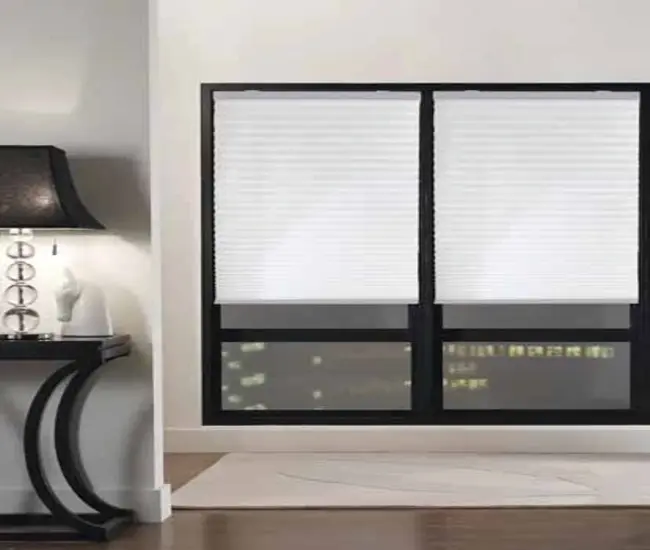
Pleated shades are a type of affordable and durable window coverings, made from a lightweight, stiffened fabric that is folded to create an accordion effect. They are also referred to as plisse blinds or honeycomb blinds, a close relative of pleated shades.
Fabric Choices for Pleated Shades

Based on Material:
- 100% polyester
- Polyester blend
- Woven grass
- Crinkle silk
- Medium-weight cotton
- Synthetic fabric
Based on Function of Fabric:
Sheer Fabrics
If you choose sheer fabrics for your pleated shades, they will allow natural light to enter your home, while softening and diffusing it. Sheer material gently filters and scatters natural light, diluting the harshness of direct sunlight and creating a pleasant and inviting atmosphere.
Light Filtering Fabrics

Light filtering pleated shade fabrics can brighten the room and reduce dependence on artificial lighting, saving on electricity and creating a perfect backdrop for residential and commercial spaces. These fabrics come in varying degrees of view through.
Blackout Fabrics

Blackout fabrics are designed to block out 100% external light. So, they are perfect for bedrooms, media rooms, and other spaces where you need maximum darkness and privacy. They ensure a restful sleep and create a cinema-like atmosphere.
Translucent Fabrics
Translucent pleated shade fabrics allow diffused light to enter your room, while offering privacy. Choose these fabrics for living rooms and spaces where you need to enjoy natural light while maintaining privacy.
Screen Fabrics
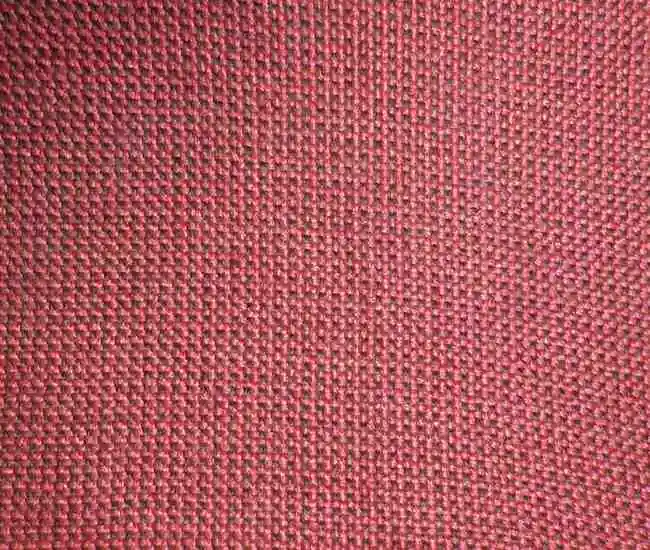
If you need a balance between light filtration and privacy in your sunrooms or home offices, we highly recommend screen fabrics. They offer UV protection, glare reduction, and view preservation.
Things to Consider When Choosing the Right Fabric for Your Pleated Shades
- Consider the climate of the area your home is located in when choosing the right fabric for pleated shades.
- Think about your room’s style and ambiance where you want to install the pleated shades.
- Consider your home’s exposure to sunlight and UV rays.
- Factor in your own personal style.
- If you want to use your pleated shades in your kitchen, bathroom, laundry room, or other high moisture areas, choose moisture-resistant fabrics.
DIY Guide to Make Your Own Pleated Fabric Shades
Embarking on a DIY window treatment project that features neat, accordion-like fabric pleats? If you gain the required skills and gather the essentials materials, it could be as easy as pie.
Skilled homeowners love to make and install pleated blinds for their aesthetic appeal and lots of functional benefits, such as privacy, light control, energy efficiency, durability, and low maintenance.
Here is a comprehensive guide about how to make a pleated window shade.
Making your own pleated window coverings can offer several advantages, such as cost savings, complete personalization (of size, design, fabric, color, and pattern), perfect fit, and a creative expression of your artistic abilities.
Materials and Tools You’ll Need
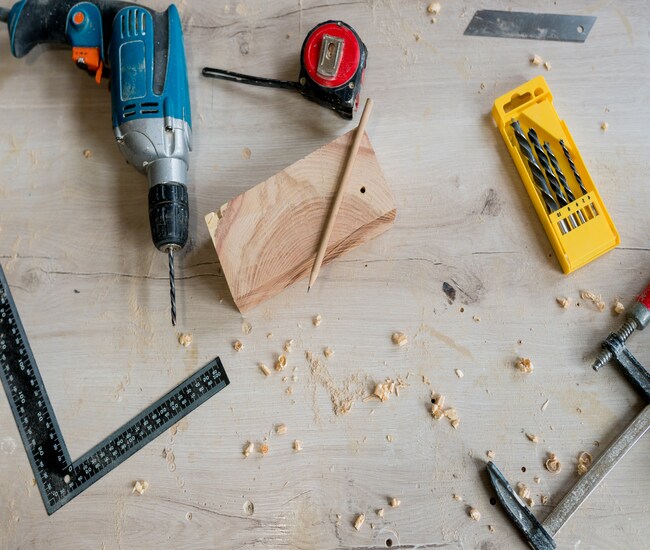
Specific tools and materials you’ll need to make your pleated blinds may vary based on your preferred mode of construction, design, and the size of the window frame.
Below are some suggested materials and tools required for this Do-It-Yourself project.
Materials
Fabric: Choose medium-weight cotton, polyester, or a polyester blend.
Lining Fabric (Optional): Choose a lining fabric (or blackout lining) if you want to get complete privacy and light control.
Plastic or Metal Rings: These are used to create the pleats and attach the lift cords that raise, lower, and adjust the window shades.
Lift Cord (Not Safe for Children and Pets): To operate your pleated shades, you’ll need a durable lift cord that can withstand the weight of the fabric. However, a cord lift is not considered safe for children and pets.
Cordless Lift System (Safe & Recommended): A cordless lift system is not only convenient to operate, but it also offers safety for children and pets.
Mounting Brackets & Screws: You will need mounting brackets and screws to fix your pleated shades inside or outside the window frame.
Tools
Steel Measuring Tape or Rule: To measure the dimensions of your window frame and determine the size of the shades.

Fabric Scissors: For cutting the fabric material to the required size.
Sewing Machine: To sew the panels of fabric material together and create the pleats.
Iron & Ironing Board: To process the fabric and create crisp pleats.
Hand Sewing Needles & Thread: For any hand-sewing tasks, like attaching lift cords.
Screwdriver: To fix brackets and other mounting hardware for hanging the shades.
8-Step DIY Procedure to Make Pleated Window Shades
While making pleated blinds could be a hectic task, the following step-by-step procedure could make things easier for you.
Step 1: Measure & Cut the Fabric
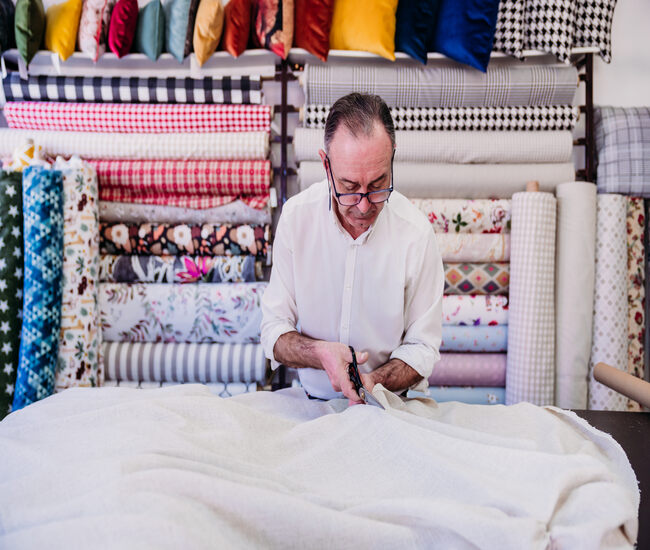
Measure the width and height (w x h) of your window frame. Use a steel measuring tape or a ruler to mark the measurements on the fabric. Cut the piece of fabric to the desired size using fabric scissors.
Step 2: Prepare the Fabric Panels
If you’re using a blackout fabric lining, cut it to the same size as the main fabric panel. Align the main fabric panels and fabric lining with their right sides facing each other. Pin them together along the edges. Leave one edge open for turning later.
Step 3: Sew the Fabric Panels
Using your sewing machine, stitch along the pinned edges of fabric panels, leaving the designated opening unstitched. Trim any excess fabric along the stitched edges and remove the pins.
Step 4: Turn the Fabric Right Side Out
Reach through the opening to carefully pull the fabric and turn it right side out. Use a pointed object, like a pencil or a chopstick, to push out the corners and create clean edges. Then, press the fabric with an iron to smooth out any creases or wrinkles.
Step 5: Create the Pleats
Start at the bottom of your blind and fold the fabric upward, forming a pleat. Hold the pleats in place and secure them by stitching through all layers of fabric at the bottom edge. Continue folding and stitching the fabric for creating evenly spaced pleats. The number and size of pleats will depend on the width of your fabric.
Step 6: Attach the Rings & Lift Cords or Cordless System
Attach rings to the backside of each fabric pleat, positioning them at the same height for a symmetrical and consistent look. Cut the lift cord to the desired length for raising, lowering, or adjusting the shade. Thread the lift cords through the rings and try to knot at the bottom of each cord to prevent them from slipping out. Alternatively, you can install a cordless, motorized, or smart lift system, which is safe for homes with children and pets. A motorized lift can also be integrated into your existing smart home automation system.
Step 7: Install the Cord Lock
Determine the desired height for your pleated window shade when fully lowered (or closed) and mount the cord lock accordingly. You can feed the cords through the cord lock system or wrap them around the cord cleat to secure the blind at different heights.
Step 8: Hang the Shade
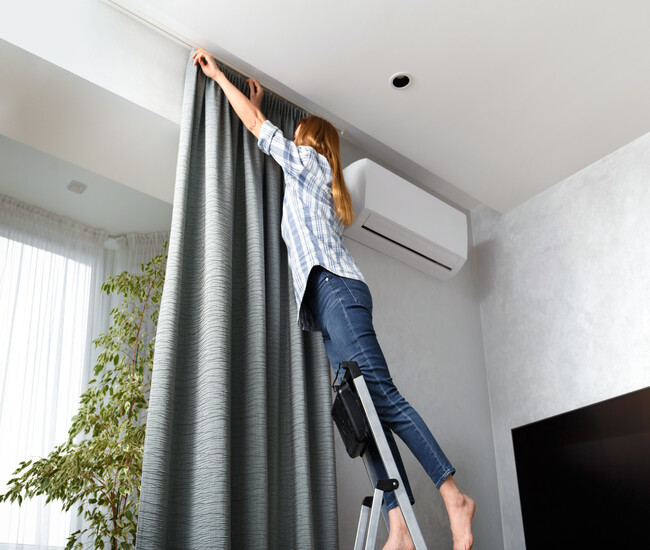
As per your choice, you can mount your pleated window shades inside or outside the window frame. You can use screws and a screwdriver to install the mounting brackets according to the manufacturer’s instructions. Slide the top edge of your shade into the mounting brackets and secure them in place.
Need More Help?
Still unsure about the choice of right material for your pleated shades? Get in touch for further help now! Use 24/7 live chat or give us a call at (800) 863-6109 to contact our experts for DIY solutions.
